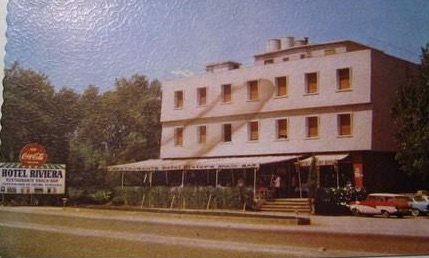HOW TO RECOVER AN HISTORICAL ASSET
In the origins of coastal tourism in Catalonia, in the early days of sea bathing and seaside resorts from the beginning of the 19th century until 1939, urban transformations have turned its coast into a strategic area for sun and beach tourism on a global scale. Its evolution, intimately linked to leisure and tourism, analyses how the facilities located on or near the sea transformed the physiognomy of the Catalan seafront in a framework of competition between industrial, port and maritime leisure uses. The Catalan seafront and the changes in its use from the post-war period to the present day have been, in some cases, big and in others, striking. And these are the reflection of the socio-economic readjustments in the productive structures of Barcelona and also in the hub and small coastal towns with a strong territorial impact, as is the case of Castelldefels in 2018, according to our report submitted to the City Council.
Located on the Castelldefels C-31 motorway, 500 metres from the Olympic Canal, until 2009, the ‘Riviera Club’ operated as a hotel (Hotel-Riviera) until the mid-nineties, when it was acquired by Restaurante Hotel Riviera, S.L. to convert it into the largest brothel in Spain. At that time they obtained a municipal license for a ‘club with rooms’ and later, in 2004, another one for ‘premises of public concurrence for the exercise of prostitution’ and thus adapt to the regulations of the Catalan government. Until 2009, when it was closed by court order due to a case of police corruption and the Castelldefels City Council suspended its business licenses.
Back then in 2018, to try to recover this historical building by means of a rehabilitation, we might say that it meant to support and to return to a maritime establishment of architectural value on the Mediterranean coast with use of tourist, vacation hotel, precisely with the one that began its activity for the place where it is located, surrounded then by campings, pine forests and summer vacation small houses.
This establishment, given its proximity to Barcelona city, to its strategic positioning with his flat morphology and the pressing need of hotel accommodation due to its geographical situation and dynamic communication, were relevant factors that justified, even more, the fact of providing the town of Castelldefels with another hotel and rescuing the character it once had with great confidence in the success of the future project and a high component of historical responsibility towards the town.
Whether we liked it or not, it was a historic piece of architecture in town which, due to its urban planning conditions, saw its passage through the current real-estate market as limited. Therefore, to enhance its architectural value by taking into account what it was, adapting it to the present time, complying with all the current housing regulations, providing it with an interior architecture that would favour the recovery of its essence, to make its immediate past fade from the minds of the citizens and to adapt its façades to the appearance of the building in the 1950s was a truly exciting challenge.
And only in this way would we have achieved a consolidated building, reconquered for the history of the municipality, adapted to its inaugural use and, why not, corrected the shadow of yesterday’s rancidity that the citizens of Castelldefels so deserved, because the most recent past of this almost last decade was the years it had been closed.
Barcelona, Spain, July 2022
TREC Barcelona, a full range of servicies.
Top-end projects in the residential and hotel/restaurant sectors.
In everything we do, we have a true identity and we never do the same thing twice.
All rights reserved. TREC Barcelona & Associates 2022.





